Abstract
The first section of this study deals with areas where cholera is endemic and with the conditions normally favouring endemicity. Turning next to epidemics, the author discusses their origin and types, climatic influences on them, their periodicity and the possibility of forecasting them, the role played in them by different serological races of V. cholerae, and the causes of their decline. In a section on the factors governing the local spread of cholera, he considers contact and water-borne infection; the role of contaminated food and drink, of fomites, of flies, and of carriers; and the incidence according to sex, age, race, and occupation. The last part deals with factors governing the spread of cholera over longer distances, and includes discussion of the effect of movements of individuals and groups and of assemblies of the population on pilgrimages or at religious festivals.
Full text
PDF















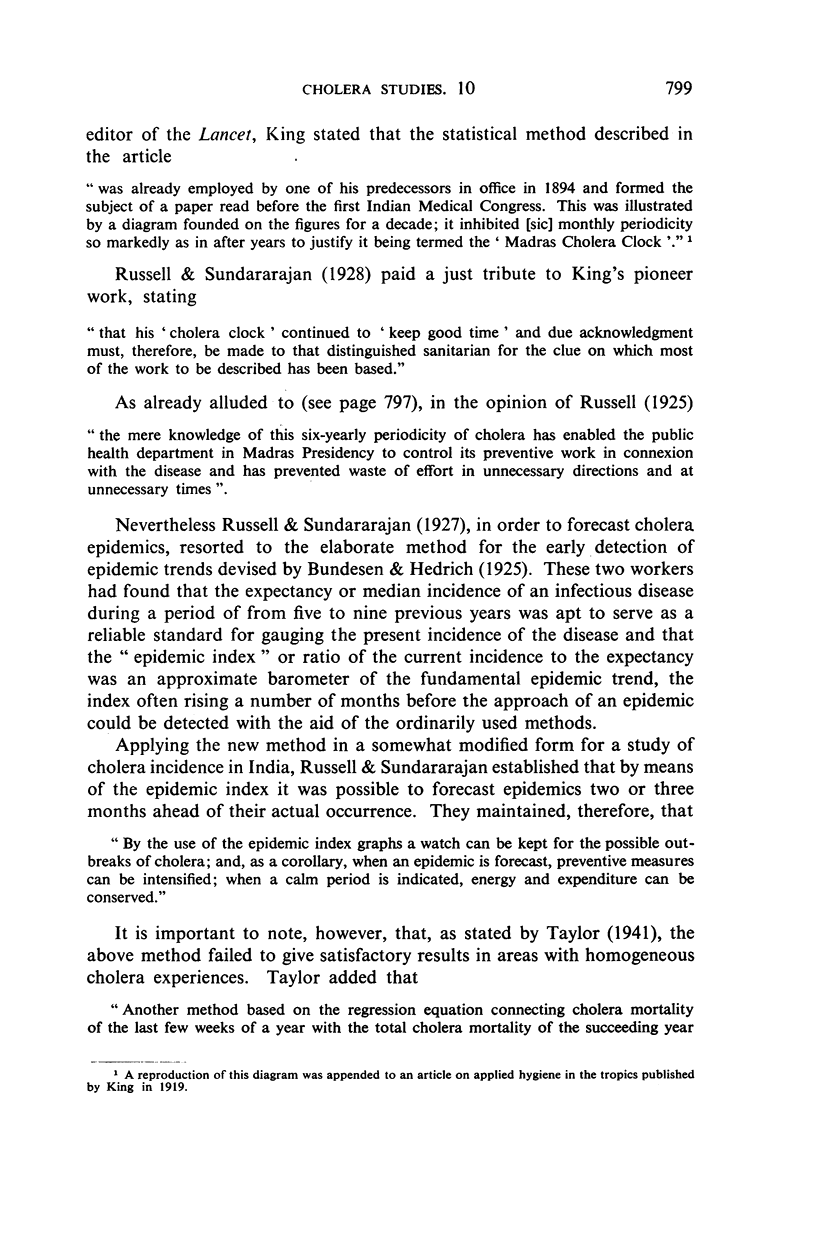















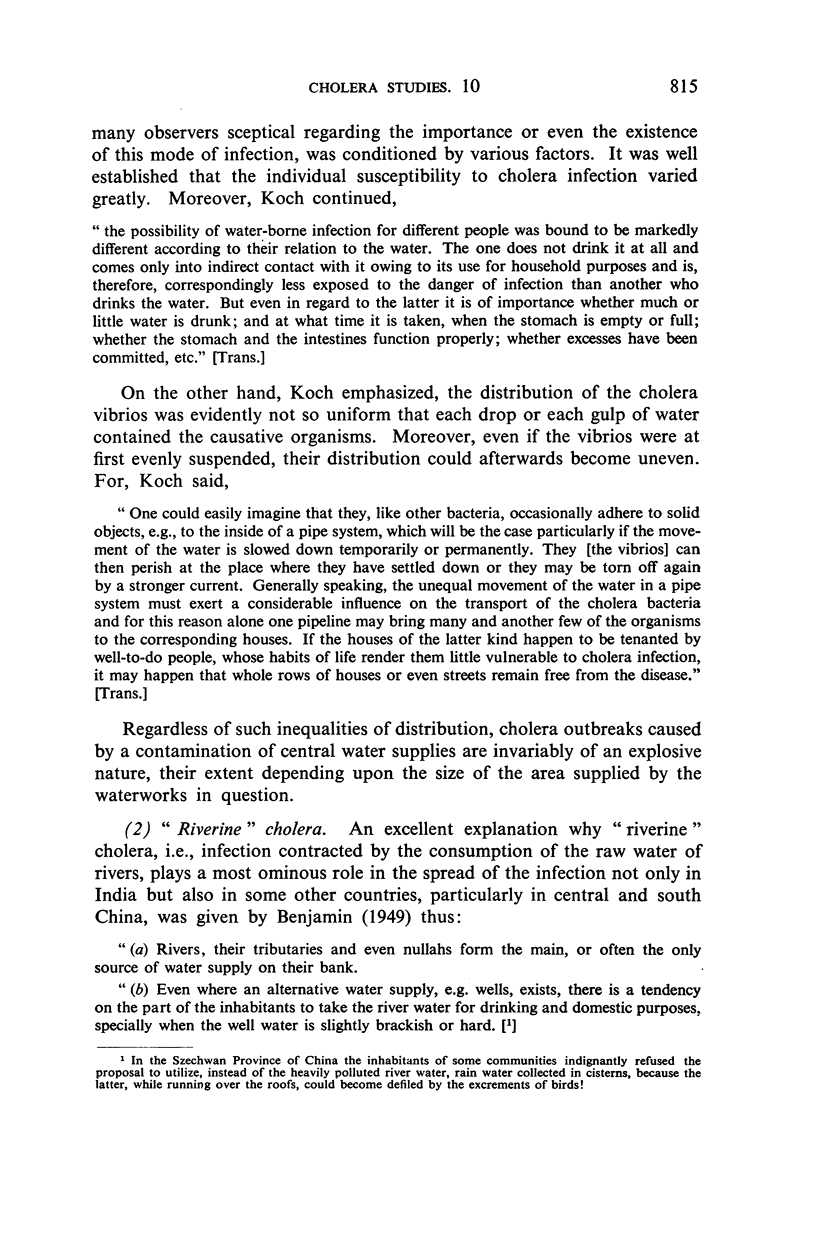

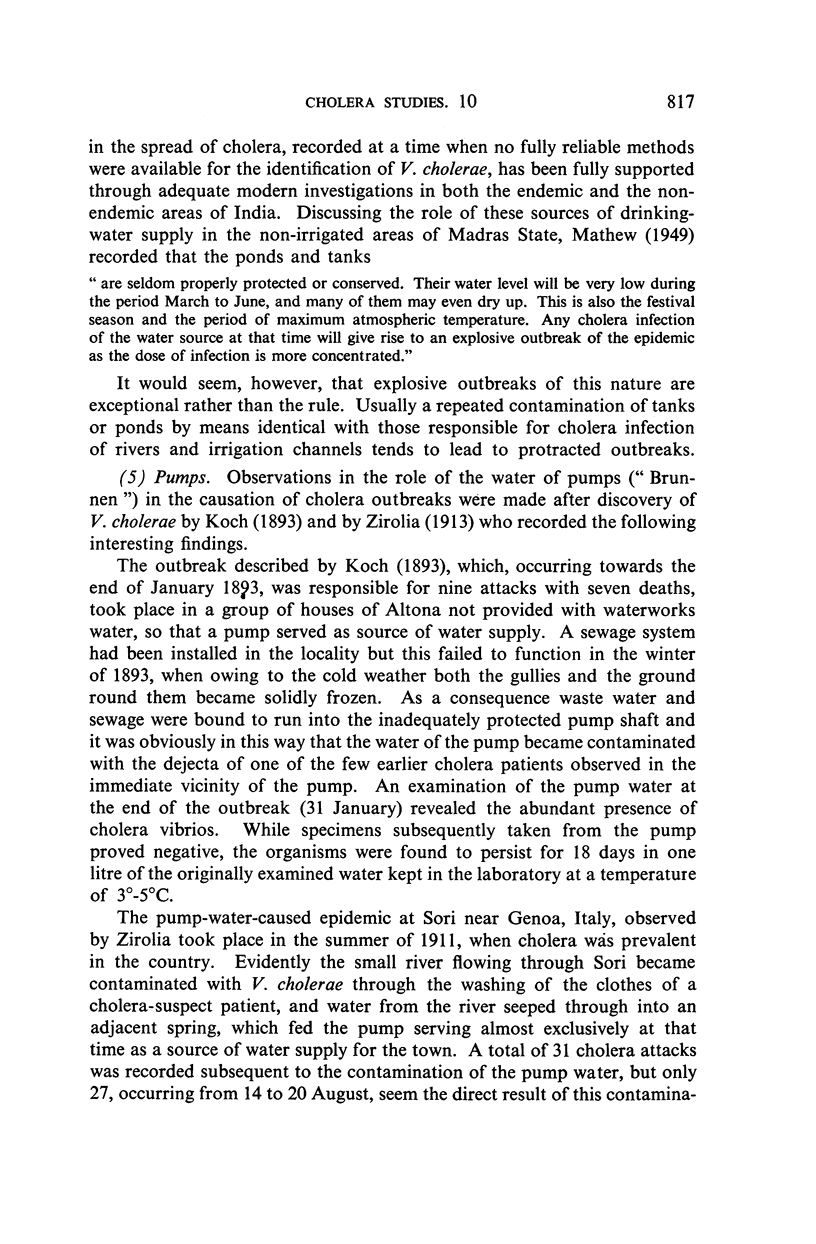















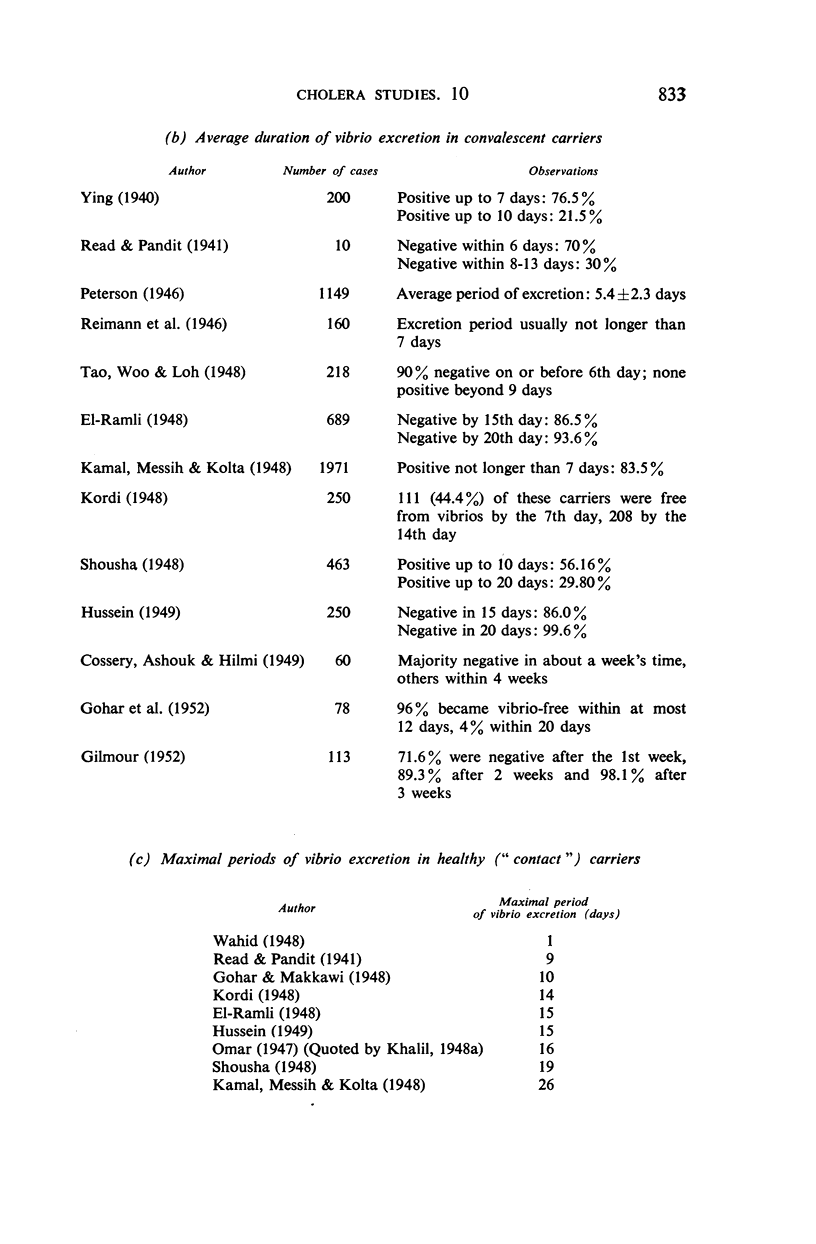
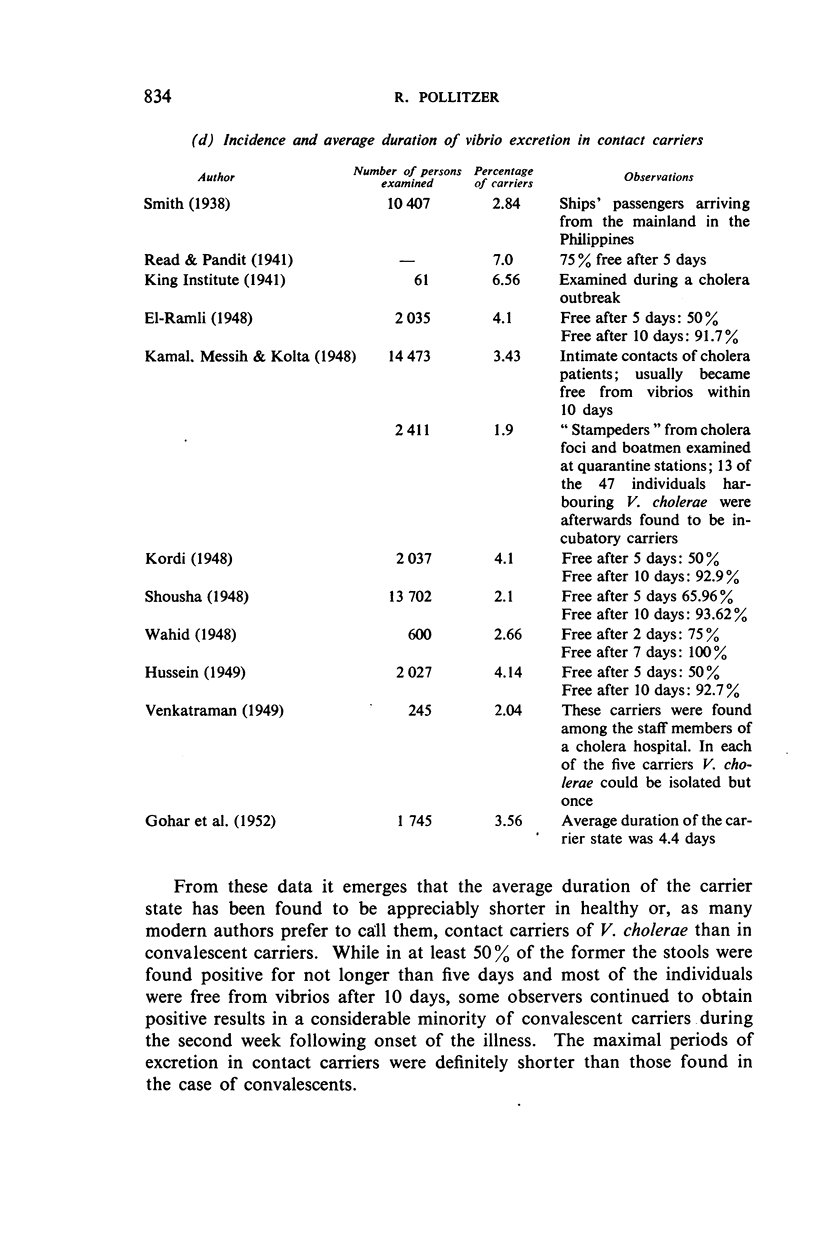


















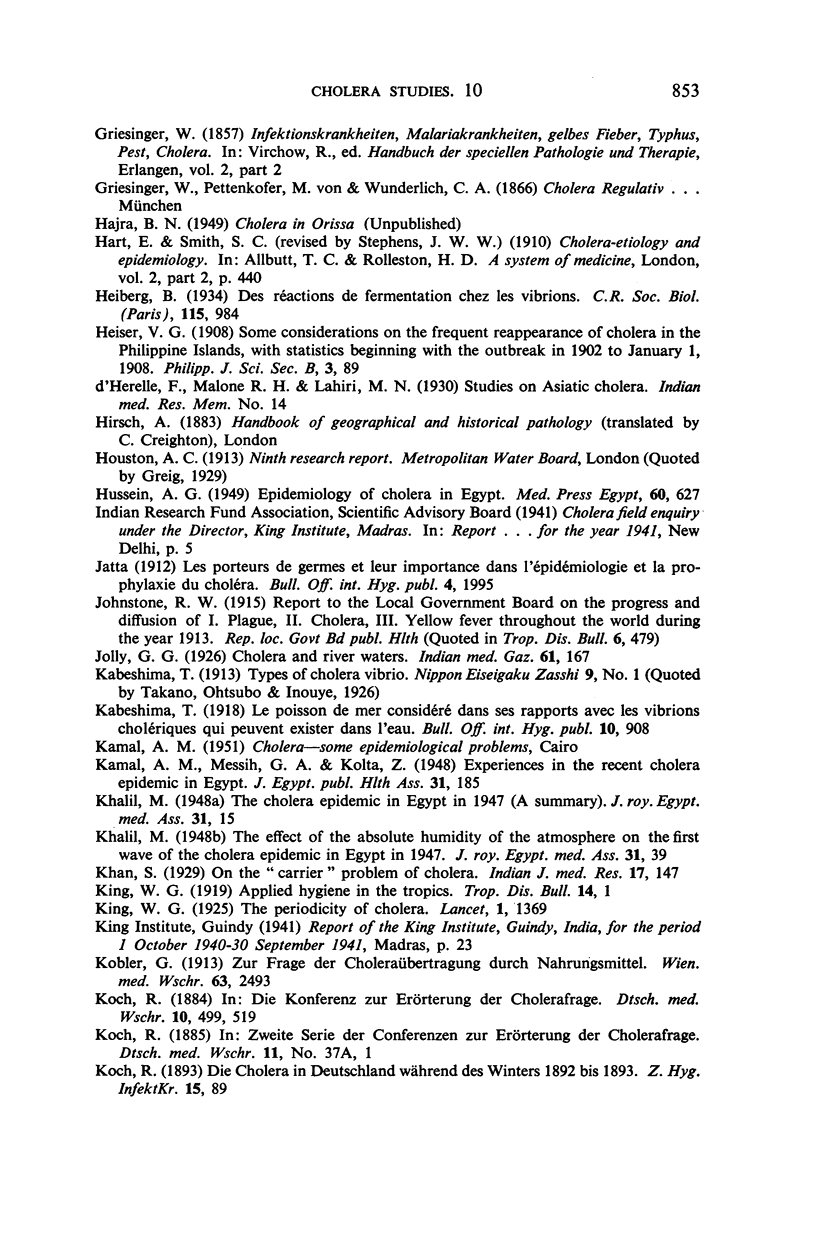




Selected References
These references are in PubMed. This may not be the complete list of references from this article.
- BANERJEA A. C. Note on cholera in the United Provinces (Uttar Pradesh). Indian J Med Res. 1951 Jan;39(1):17–40. [PubMed] [Google Scholar]
- Basil M. M. NOTES ON CHOLERA. Br Med J. 1910 Sep 24;2(2595):839–841. doi: 10.1136/bmj.2.2595.839. [DOI] [PMC free article] [PubMed] [Google Scholar]
- Brownlee J. Periodicities of Epidemics of Measles in the Large Towns of Great Britain and Ireland. Proc R Soc Med. 1919;12(SECT):77–120. [PMC free article] [PubMed] [Google Scholar]
- Bundesen H. N., Hedrich A. W. METHOD FOR EARLY DETECTION OF EPIDEMIC TRENDS. Am J Public Health (N Y) 1925 Apr;15(4):289–296. doi: 10.2105/ajph.15.4.289-a. [DOI] [PMC free article] [PubMed] [Google Scholar]
- COSSERY BEY G. N., ASHOUR M. A., HILMI R. The bacteriology and pathology of cholera. J Egypt Med Assoc. 1949 JunâJul;32(6-7):529–537. [PubMed] [Google Scholar]
- GILMOUR C. B. Period of excretion of Vibrio cholerae in convalescents. Bull World Health Organ. 1952;7(3):343–351. [PMC free article] [PubMed] [Google Scholar]
- GOHAR M. A., EL-MOFTY A., EISSA A. A., MOUSA A. H., SOROUR A., DOSS H., GOMA T., ABOU EL-WAFA M., EL-AZHARI A., MITRI S. Some observations on the carrier state in cholera. J Trop Med Hyg. 1952 Nov;55(11):241–245. [PubMed] [Google Scholar]
- POLLITZER R. A note on the incidence and epidemiological importance of cholera carriers. Bull World Health Organ. 1952;7(3):359–369. [PMC free article] [PubMed] [Google Scholar]
- RAO K. K., CHELUVARAYAN C., NATARAJAN C. V. Studies in cholera. J Indian Med Assoc. 1952 Apr;21(7):295–302. [PubMed] [Google Scholar]
- SWAROOP S. Endemicity of cholera in India. Indian J Med Res. 1951 Apr;39(2):141–183. [PubMed] [Google Scholar]
- TAO S. C., WOO M. O., LOH W. P. Clinical observations on 687 cases of cholera. Chin Med J. 1948 Jul;66(7):377–386. [PubMed] [Google Scholar]


